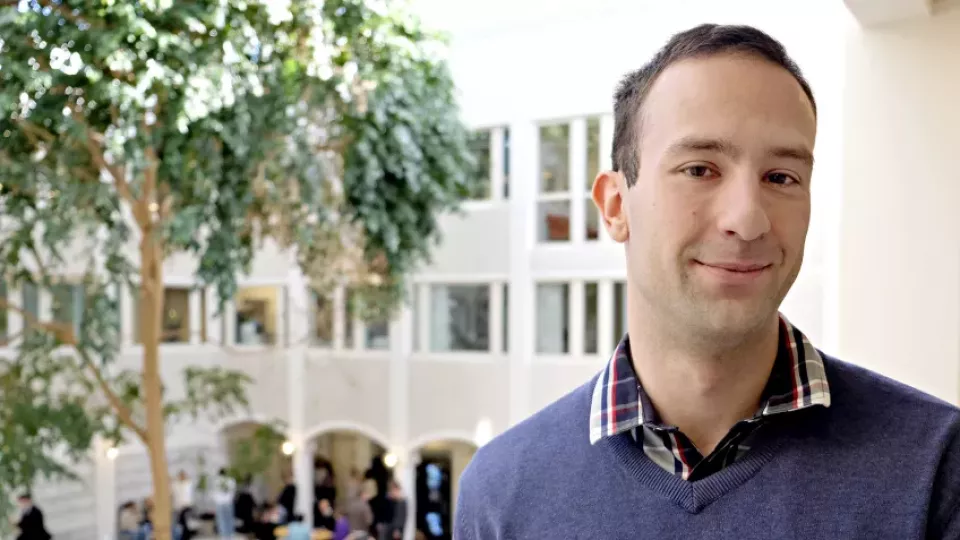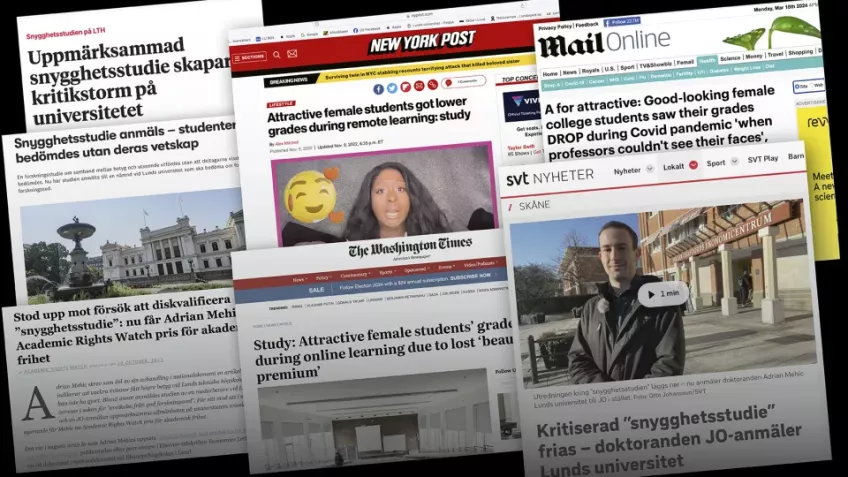Economist Adrian Mehic had not even defended his doctoral thesis yet, but had an article from his forthcoming thesis published in a scientific journal.
”I could imagine that it would create a lot of buzz. But never that it would get THAT big. The phone never stopped ringing! New York Times, Washington Post, Fox News...,” he says today.
Adrian Mehic describes the autumn of 2022 as ”a perfect storm”, a metaphor for when a series of unfortunate circumstances come together. But he smiles when he says it.
”One lesson for me was how to deal with and respond to the media,” he says, adding:
”In an interview during that storm, I said I would be careful about researching controversial topics in the future. But now I have changed my mind. You shouldn't be afraid of that. Such research is needed.”
Today, a search in the Swedish Media Archive run by Retriever for ”Adrian Mehic” yields about 365 hits. The scientific article ”Student beauty and grades under in-person and remote teaching” has been clicked, shared and commented on more than 13 000 times on Facebook.
What was your research about?
”It was a case study in which students of both genders who were considered beautiful received higher grades than other students before the pandemic. But during the pandemic, this decreased for good-looking girls, while the effect remained for good-looking boys.”
What were the reactions?
”Extensive! There was media ”all over the place”. Hundreds of students also contacted me directly by email. They wanted to know more about the results, whether they had been included in the study – and how good-looking they themselves had been considered to be. But there were many more positive contacts than negative ones, at least those who contacted me directly.”
Why were the reactions so strong?
”It's a topic that many people can relate to. There has been a lot of talk about appearance in recent years. The fashion industry is criticised for having models that are too thin, and everything related to the pandemic was already interesting in itself. And then the media put a spin on it – ”pretty girls got worse grades during the pandemic”. What was actually new in the research was that the good-looking men kept their grades during the pandemic. It was not highlighted very much. in the media”
Today, Adrian Mehic works at the Institute for Economic Research (IFN) in Stockholm and combines this with teaching and supervision at LUSEM. His goal is to become an associate professor (docent).
”The ”beauty study” was really just a sideline in a larger project on ”peer effects”, i.e. how your friends' appearance affects your grades. But this was in the middle of the pandemic, so I had to wait to start the main study. Now it has just been published. But I haven't had time to put it in Lucris yet,” says Adrian Mehic, smiling.
Student beauty and grades under in-person and remote teaching – portal.research.lu.se
Note: This article was first published in the Lund University Magazine (LUM) #2 2024.
The article is available in Swedish on medarbetarwebben.lu.se



